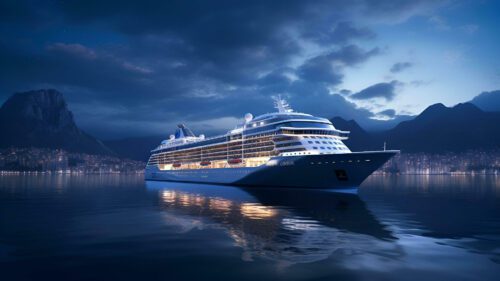
وبلاگ سپهران | Airports | The Best Airports in the World
Currently, airports are not merely points of departure and arrival; they are globally recognized as symbols of innovation, comfort, and technological advancement. From Asia to Europe, there are astonishing airports that provide unforgettable experiences for travelers with unparalleled services and advanced facilities.
These airports, with their stunning architecture and modern design, not only make travel easier but also transform into attractive destinations for exploration, relaxation, and excitement. They strive to set new standards in the aviation transport industry.
Their amenities include spas, green spaces, and modern restaurants equipped with the latest technologies, all designed to enhance passenger comfort and security.
Meanwhile, some airports have gained recognition for their innovations in sustainability and social responsibility, working diligently to minimize their environmental impact. Therefore, these airports are not just gateways to distant destinations; they have evolved into unique experiences ripe for discovery and enjoyment. In this text from the Sepehran blog, you will be introduced to the world’s best airports.

Changi Airport is not only recognized as one of the world’s best airports but also stands out for its stunning design, architecture, and extraordinary facilities, making it a noteworthy tourist destination. Located in the east of Singapore, it serves as a major air transport hub in Asia. Changi Airport is especially renowned for its high-quality service, cleanliness, recreational facilities, and a wide range of shopping centers. Let’s explore some of the standout features and amenities of this airport:
Changi Airport is renowned for its unparalleled passenger services. These include free mobile charging stations, complimentary internet access, sleeping rooms, children’s play areas, prayer room facilities, and luggage services. Furthermore, the airport staff are exceptionally kind and always ready to assist passengers in any way possible.
Changi Airport is known as a major shopping hub, covering a wide range of stores and international brands, electronics, clothing, and beauty products. From convenience stores to luxury boutiques, everything at this airport is designed to meet the needs of travelers. Additionally, a variety of restaurants and cafes are available across all terminals, offering a broad spectrum of international and local cuisines.
Changi Airport is at the forefront of incorporating new technologies to enhance passenger experiences. Among these technologies are automated check-in systems, self-service baggage kiosks, and app-based indoor navigation systems. Furthermore, the airport utilizes artificial intelligence and data analytics to reduce waiting times in queues and optimize passenger traffic flow.
Changi Airport demonstrates its commitment to sustainability and environmental protection through initiatives like advanced energy management systems, utilizing natural light for illumination, and recycling programs.
Changi is equipped with numerous recreational facilities, including themed gardens, art exhibitions, a cinema, an outdoor pool, massage centers, and gardens within the airport such as the Butterfly Garden, Orchid Garden, Cactus Garden, and the HSBC Waterfall Garden.
The heart of Jewel Changi, located at the airport’s center, is the HSBC Rain Vortex, recognized as the world’s largest indoor waterfall. This stunning indoor waterfall, cascading from a height of 40 meters (about 130 feet), creates a breathtaking visual spectacle. At night, light shows transform the waterfall into a living piece of art, attracting tourists and photographers from around the globe. The HSBC waterfall is designed to draw fresh air into the space, creating a cool and pleasant environment.
Changi Airport has repeatedly been selected as the world’s best airport by prestigious international organizations, earning numerous accolades. These awards are not only for its airport facilities but also for customer experience, innovation, and efficiency in delivering services to passengers.
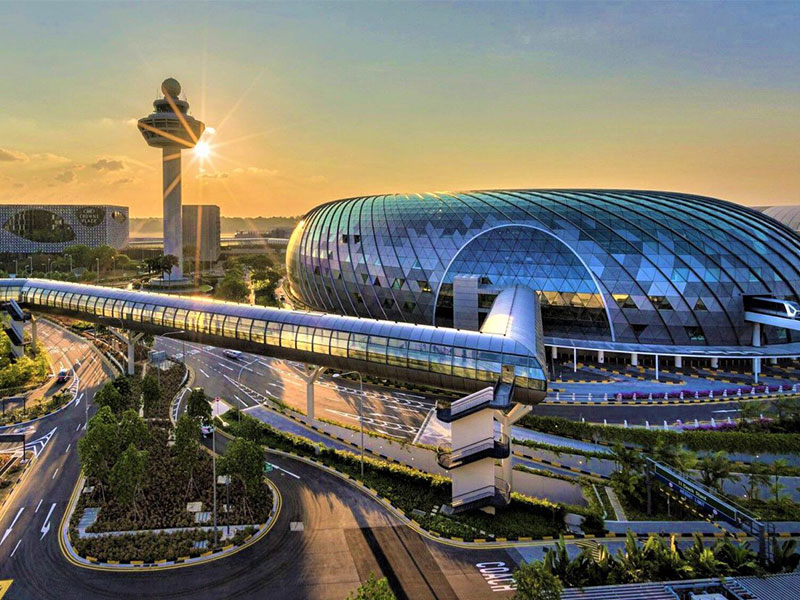
Singapore’s Changi Airport, now recognized as one of the best airports in the world, has a long and fascinating history of growth and development. This airport symbolizes progress and innovation in the aviation industry, with its history dating back to the 1970s. At that time, Singapore decided to build a new airport to strengthen its position as a key commercial and tourism hub in Asia.
Before Changi Airport opened, Paya Lebar Airport, located near Singapore’s city center, was the country’s sole airport. However, the rising demand for air travel and the spatial limitations of Paya Lebar Airport made it clear that Singapore needed a larger and more equipped airport. As a result, the Singaporean government decided to construct Changi Airport in the east of the island.
Construction of Changi Airport began in the late 1970s, and it officially opened in 1981 with the launch of Terminal 1. The airport’s design, focusing on open spaces, nature, and passenger comfort, revolutionized the air travel experience. From the outset, it was designed to offer the best possible services and become an international air transport hub.
Over time, Changi Airport has continually expanded and evolved. Terminal 2 opened in 1990, Terminal 3 in 2008, and Terminal 4 in 2017. Each terminal, with its unique features, including stunning architecture and recreational and shopping facilities, has contributed to increasing capacity and enhancing the passenger experience.
Location: Singapore Changi Airport
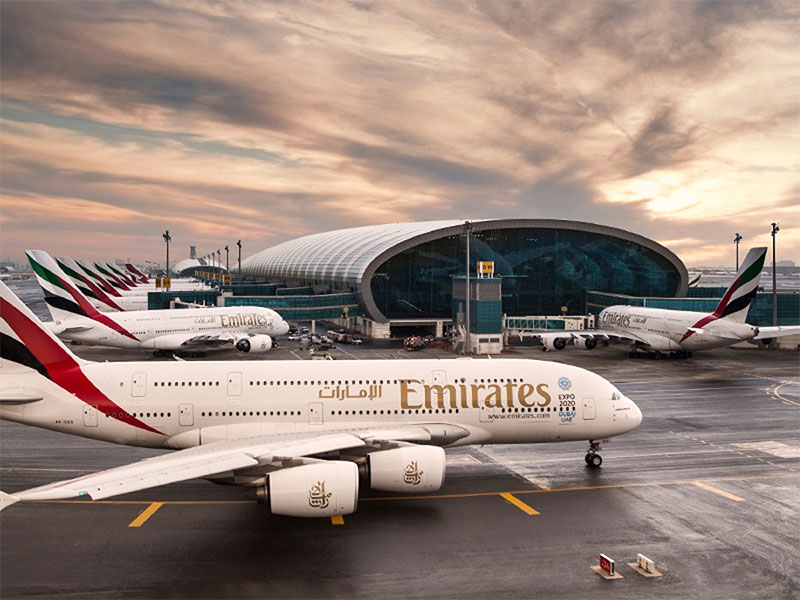
Dubai International Airport (DXB) is one of the busiest airports in the world in terms of international passenger traffic and is recognized as the most important air hub in the Middle East. Located in the United Arab Emirates, it serves as a key gateway for international flights. In the following, we provide detailed information about Dubai International Airport:
Dubai International Airport (DXB) is situated in the eastern part of Dubai, in the United Arab Emirates. Due to its central location near Dubai’s financial and commercial centers, the airport provides easy access to various parts of the city, including Deira and major tourist areas such as the Burj Khalifa and Dubai Mall. The geographical coordinates of the airport are approximately 25.2532 degrees North latitude and 55.3657 degrees East longitude. This strategic positioning has made the airport a significant transit hub for intercontinental travelers and has enabled it to play a key role in the economic growth and tourism development of Dubai.
Dubai International Airport has three terminals:
Dubai Airport is equipped with exceptional amenities, including a variety of shops, restaurants, luxury lounges, free Wi-Fi, and service centers, ready to cater to the needs of most travelers. Additionally, the shopping center located within Dubai International Airport is considered one of the largest airport shopping centers in the world.
Passengers can access the airport via taxi, bus, and metro. The airport also features several parking lots for those arriving in their personal vehicles.

Dubai International Airport, with the airport code DXB, is not only recognized as one of the busiest airports in the world for international passenger traffic but also boasts a rich history that has played a significant role in transforming Dubai into a global hub for trade and tourism.
The airport was established in 1960, at a time when Dubai was still a small city with an economy largely based on fishing and pearl trading. The opening of this airport marked a turning point in Dubai’s history, as it provided air connectivity with the rest of the world, thereby paving the way for economic development and attracting foreign investment.
Initially, Dubai Airport had only a dirt runway and a very limited terminal building. However, with Dubai’s rapid growth and its leaders’ focus on developing tourism and international trade, the airport also underwent continuous expansion.
In the 1970s, due to increasing air traffic, the airport began implementing development plans that included the construction of new terminals, a runway, and support facilities. These developments enabled the accommodation of larger aircraft and a significant increase in passenger numbers.
In subsequent years, Dubai International Airport became one of the most advanced airports, featuring luxurious terminals, flight management systems, and one of the largest airport shopping centers in the world. The airport’s continual development, along with a focus on providing high-quality services, has played a key role in transforming Dubai into a popular international destination.
Location : Dubai International Airport
Learn more about Dubai Airport
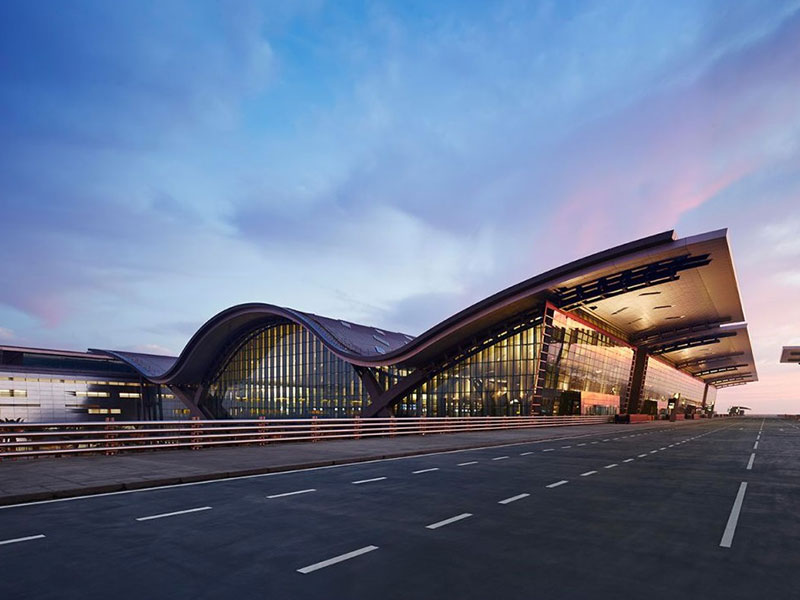
Hamad International Airport, located in Doha, the capital of Qatar, stands as one of the world’s most advanced and luxurious airports. Since its inception in 2014, it has become a symbol of prosperity and innovation in the aviation industry. The airport’s stunning design and architecture, inspired by Qatar’s cultural elements and the desert environment, have cemented its position as one of the most beautiful airports globally.
The airport is renowned not only for its aesthetic appeal but also for the exceptional facilities and services it offers. Hamad International Airport has an array of amenities, including spas, swimming pools, indoor green spaces, high-end restaurants, and luxury shops. These features encourage passengers to relax and enjoy their surroundings during their time at the airport.
Additionally, this airport has simplified the entry and exit processes for passengers through the use of advanced technologies, providing them with a hassle-free experience. A notable feature of Hamad Airport is its commitment to sustainability and reducing environmental impacts. By employing advanced energy management systems and utilizing renewable resources, the airport contributes to minimizing its environmental footprint. Moreover, the design of the interior spaces, which incorporate natural elements, creates a sense of tranquility and a connection to nature for travelers.
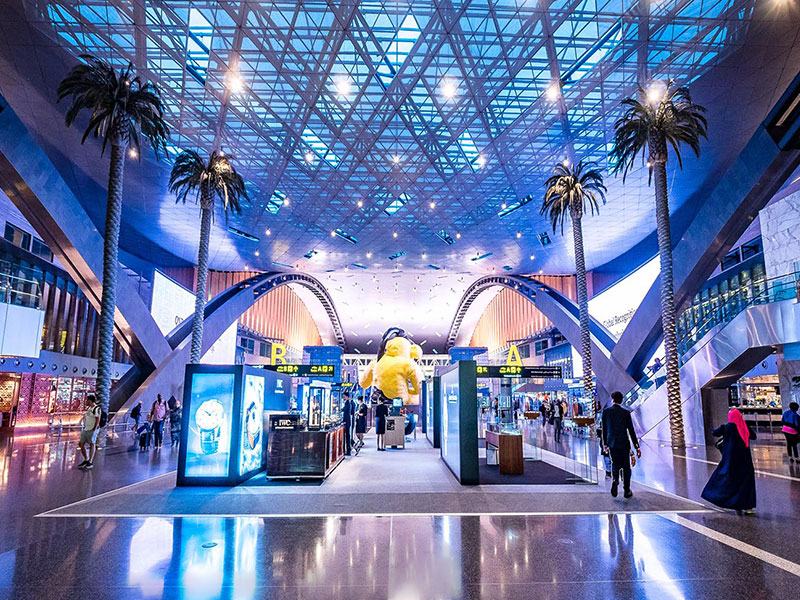
Hamad International Airport in Doha, Qatar, is one of the architectural and technological marvels in the world of airports. Officially opened in 2014, it quickly became one of the most significant air transport hubs in the Middle East. With its stunning design and focus on passenger comfort and convenience, Hamad Airport not only facilitates air travel but also offers a luxurious and memorable experience.
One of the most striking features of Hamad Airport is its unique and modern architecture, inspired by the cultural and natural elements of Qatar. The facility is environmentally friendly, complying with high environmental standards, while also leveraging the latest technologies to enhance efficiency and security. Additionally, the airport’s interior spaces are adorned with contemporary art pieces, enriching travelers’ visual and cultural experience.
The amenities at Hamad Airport are unparalleled. Travelers can enjoy luxury spas, indoor swimming pools, and private sleeping rooms for rest and rejuvenation. Furthermore, a variety of restaurants and shops, from global brands to local products, offer a unique shopping and dining experience to travelers.
Hamad Airport is also known for its ease of use and accessibility to its services. Advanced navigation and information systems help travelers move easily through the airport and reach their flights. Additionally, the airport utilizes modern technologies in luggage processing and security control, making these processes faster and more secure.
Location: Doha Hamad Airport
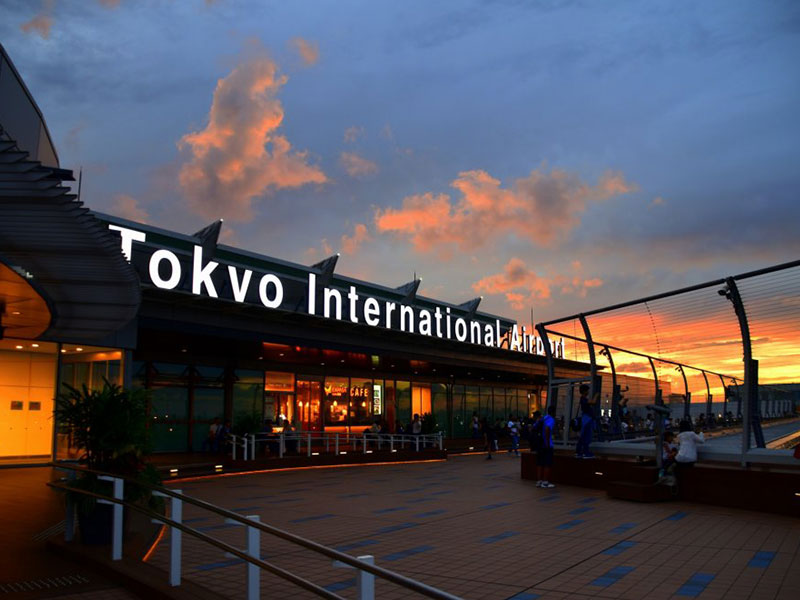
Haneda Airport is not only one of the most important air gateways to Japan but also recognized as one of the busiest airports in the world. With its strategic location near the center of Tokyo, Haneda serves as an ideal destination for travelers seeking quick and easy access to the heart of this megacity. Historically known more for domestic flights, the expansion of its international section now plays a significant role in connecting Japan to destinations worldwide.
The architecture of Haneda Airport is a blend of tradition and modernity, with facilities prioritizing comfort and efficiency for travelers. So, the terminals are well-equipped and designed to meet passengers’ needs with high standards of service and amenities, including shopping areas and a wide variety of restaurants offering an extensive range of Japanese and international cuisines.
Haneda Airport is renowned for its easy connection to downtown Tokyo and other sightseeing spots through public transportation. A variety of transport systems, including trains, monorails, and buses, provide easy and quick access to the airport, making it highly convenient for travelers and those living or working in Tokyo.
Beyond efficiency, Haneda Airport also offers rich cultural experiences to its travelers. Numerous shops within the airport sell a variety of Japanese products, including handicrafts, traditional foods, and other local goods.

Haneda Airport has a long and varied history that has evolved alongside developments in Japan and the world. From the earliest days of aviation in Japan, this airport has played a crucial role in the development of the country’s air transport.
Construction of Haneda Airport began in 1931. Initially recognized as a military airbase, it later transformed into a passenger airport that played a pivotal role in connecting Japan to other parts of the world. In the 1950s, with Japan’s economic growth and an increase in demand for air travel, Haneda rapidly expanded and became one of the busiest airports in the world.
In the 1980s, the opening of Narita International Airport, designed for international flights, shifted Haneda’s focus primarily to domestic flights. This allowed the airport to concentrate on improving infrastructure and domestic services while still serving some international flights.
However, in the early 21st century, due to Narita’s increasing limitations and the growing demand for international flights, it was decided that Haneda would once again operate as an international airport. This led to the construction of a new international terminal in 2010, enabling it to accommodate a greater number of international flights.
Recent developments have included improvements in infrastructure and services to ensure that Haneda can meet the changing needs of travelers and continue to be considered one of the world’s most advanced airports.
Location: Haneda Airport
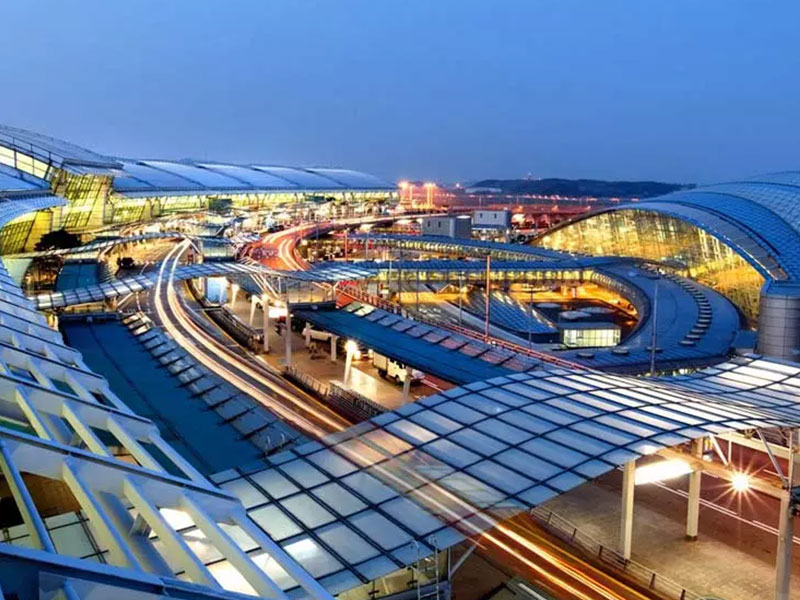
Incheon International Airport, located near Seoul, the capital of South Korea, is recognized as one of the most advanced and best airports in the world. Since its opening in 2001, it has become one of the most important air routes in Asia and has been able to receive numerous international awards due to the high quality of its services and facilities.
Incheon International Airport, with its modern architectural design and special attention to detail aimed at enhancing comfort and satisfaction for travelers, offers a user-friendly and pleasant environment. The airport features several terminals, which are interconnected by modern transportation systems. This includes a high-speed train system that links the terminals and provides easy access to downtown Seoul.
Incheon International Airport is also famous for its unique cultural and recreational facilities. Travelers can enjoy art galleries, live concerts, and Korean cultural shows. Additionally, there is a traditional Korean garden within the airport premises, providing a tranquil place to spend time before flights.
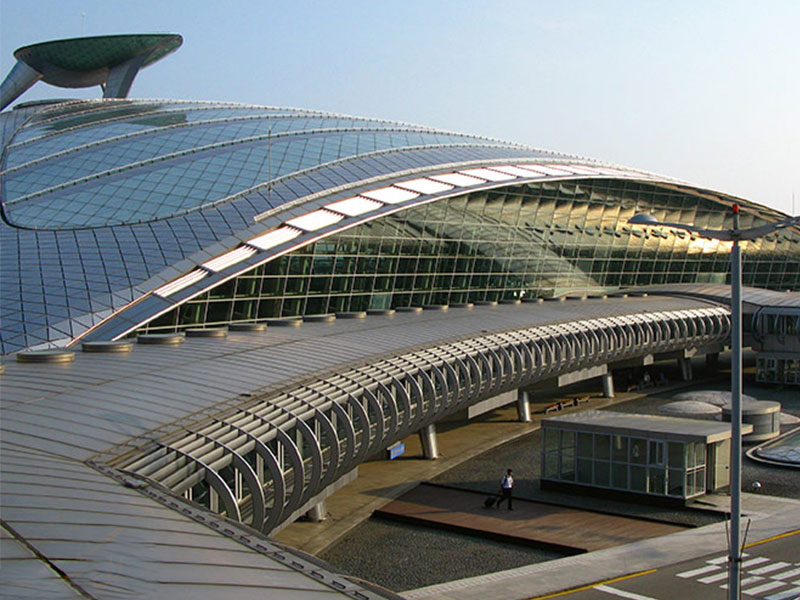
Incheon International Airport, one of the most significant gateways into South Korea, has a relatively young distinguished history. The airport was inaugurated on March 29, 2001, and has since been recognized as one of the most advanced and successful airports in the world.
Before the inauguration of Incheon International Airport, Gimpo International Airport in Seoul served as the primary international airport of South Korea. However, due to spatial limitations and the need for more advanced international infrastructure, the South Korean government decided to construct a new airport capable of accommodating the growing air traffic and enhancing South Korea’s role in global trade and tourism.
The chosen location for this new airport was an island near Incheon, created through large-scale engineering and land reclamation projects. This site was selected for its proximity to Seoul and easy access to public transport and major highway networks. Constructing the airport was accompanied by numerous engineering challenges, but it ultimately became one of South Korea’s most successful infrastructure projects.
Since its opening, Incheon International Airport has been continuously expanded and improved. Terminal 2, which opened in January 2018, is one of the airport’s newest terminals, significantly contributing to passenger traffic control and offering more services to travelers. It’s worth noting that the airport has placed a strong emphasis on sustainability and environmental considerations in its expansion efforts.
Location: Incheon International Airport
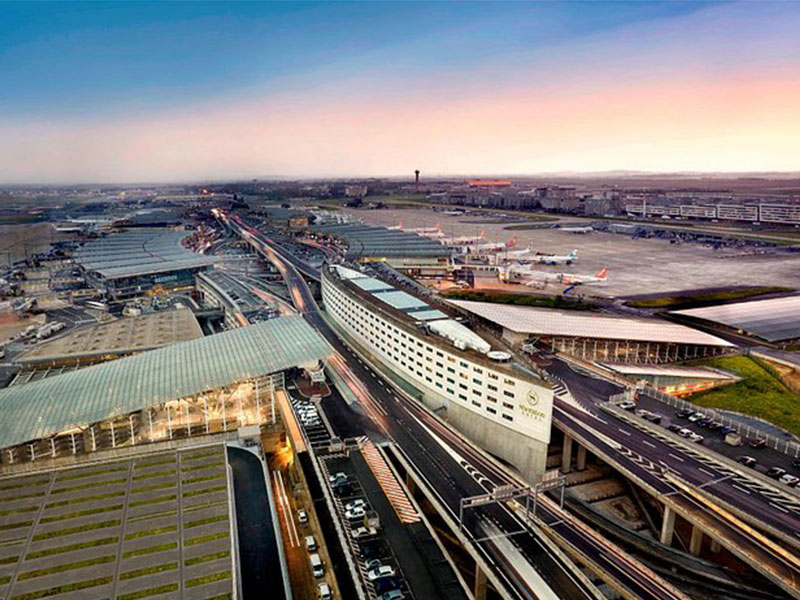
Named in honor of Charles André Joseph Marie de Gaulle, this airport is considered one of the largest and busiest airports in the world. Charles de Gaulle Airport (CDG) in Paris, France, is known as the largest international airport in France and is named after Charles de Gaulle, the leader of the French Resistance and the founder of the Fifth French Republic. The airport is located 30 kilometers northeast of Paris and serves as the main hub for Air France. In 2023, more than 67 million passengers and 448,305 flights were recorded at this airport, making it one of the busiest airports in the world.
Charles de Gaulle Airport in Paris has three main terminals, each with its unique features and facilities. The details of these terminals are as follows:
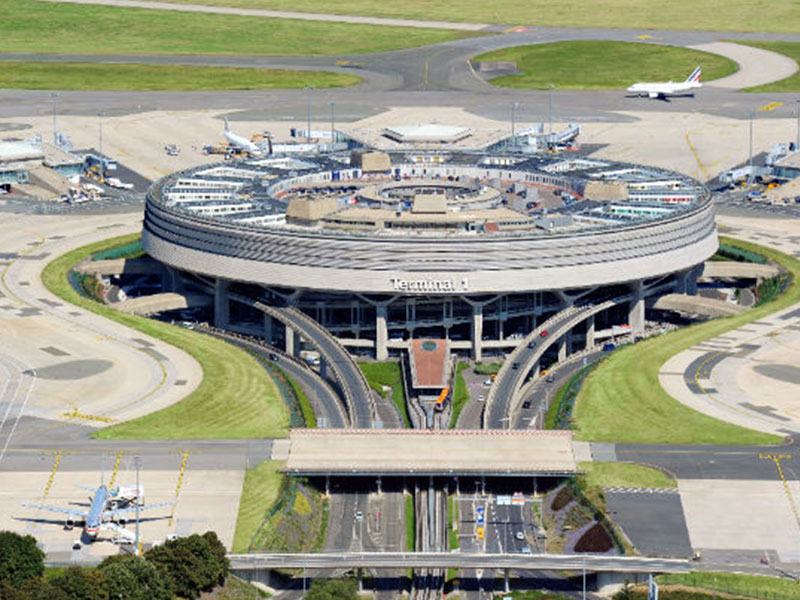
Charles de Gaulle International Airport, the most important air gateway of France to the world, tells a story of innovation and development that has transformed it into one of the busiest airports globally and a symbol of national pride for France.
The construction of the airport began in 1966 when there was a recognized need for a new airport to support the increasing air traffic and to replace the older airports of Paris. So, the airport opened its doors to the world on March 8, 1974. The design of Terminal 1, completed in 1974 by architect Paul Andreu, is considered a testament to the spirit of innovation and creativity in airport architecture.
Terminal 2, which was later inaugurated in 1981, witnessed further expansion of the airport and was officially opened in the presence of the then-President of France. Over time, this terminal was divided into several sub-terminals to accommodate the rising demand for air travel.
Over the decades, Charles de Gaulle Airport, with a focus on increasing capacity and enhancing passenger experience, has undergone numerous developments and renovations. Today, the airport, serving hundreds of international and domestic destinations and supporting a vast network of airlines worldwide, has become a major hub for air transport in Europe.
Today, Charles de Gaulle Airport is not only regarded as a vital gateway for France but also stands as a modern symbol of sustainable development and innovation in the global air transport industry.
Location: Paris Charles de Gaulle Airport
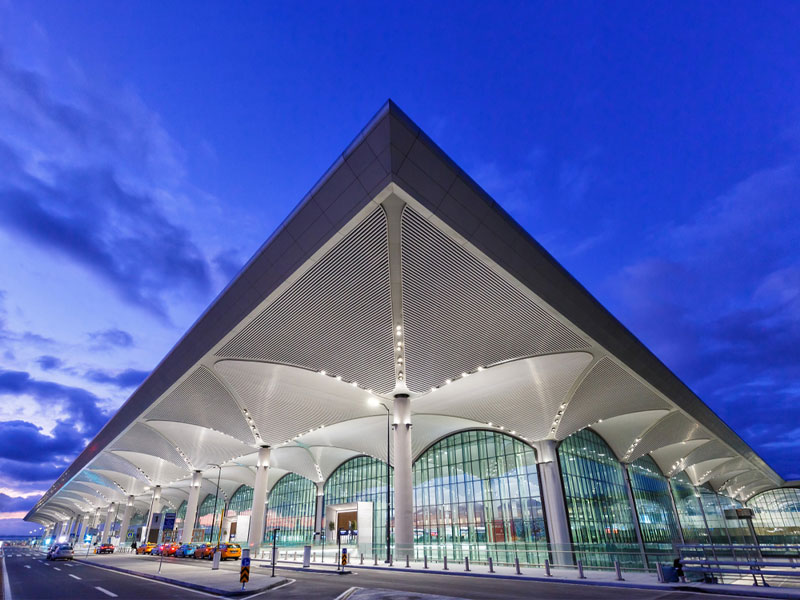
Continuing our discussion of the world’s best airports, we now focus on the new Istanbul Airport, currently recognized as Turkey’s primary international airport and as one of the largest and finest in the world. Inaugurated on October 29, 2018, it annually transports more than 200 million passengers to various parts of the globe. The new Istanbul Airport serves as a major air hub bridging Europe and Asia, the West and East, and is poised to become one of the world’s most significant airports.
The new Istanbul Airport boasts first-class facilities and services, high-technology security controls, and advanced features for environmental enthusiasts. Therefore, spending time at the new Istanbul Airport will be very enjoyable.
The architecture of the new Istanbul Airport, inspired by innovative and modern designs, stands out as prominent and impactful. An international design team executed the project, with each member bringing unique perspectives. This airport is designed to offer a unique experience for those entering and exiting Turkey.
The airport’s control tower, one of its distinctive features, is designed in the shape of a tulip, a national symbol that is internationally recognized as an architectural landmark. This tower is not only an aesthetic symbol but also represents the cultural and historical identity of Turkey. The use of advanced technologies and the emphasis on sustainability and environmental protection are other notable features of the airport’s architecture. This airport is not just a transportation hub; it is also recognized as a modern architectural symbol, designed in line with the latest global standards.

The history of the new Istanbul Airport began with the need for a larger and more modern airport to meet the increasing demand for air transportation in Turkey. This airport represents an ambitious and strategic project to enhance Istanbul’s role as a major global air transport hub.
The airport’s location was chosen in the Arnavutköy district, on the European side of Istanbul near the Black Sea coast, due to the ample space and potential for future expansion. The design of the airport emphasized the use of advanced technologies and environmental standards. Construction phases of the airport began in June 2014 in the presence of high-ranking government officials, and the first phase was inaugurated in October 2018.
The construction of the airport was planned in phases. In the first phase, a passenger terminal capable of handling 90 million passengers annually, along with flight runways, was constructed. With the opening of the new airport, the IATA airport code IST was transferred from Atatürk Airport to this facility, which quickly became one of the busiest airports in the world. It currently serves as an important hub for both international and domestic flights, playing a significant role in connecting Europe and Asia.
Due to its unique geographical location, which positions Istanbul as a central hub between the continents of Asia, Europe, and Africa, the airport plays a significant role in enhancing Turkey’s position as a major center for transportation and tourism on a global scale.
Location: Istanbul Airport

Munich Airport, also known as Flughafen München, is one of the most important international airports in the Munich region and the state of Bavaria. Located 28.5 kilometers northeast of Munich and operating under the IATA code MUC and the ICAO code EDDM, it is the second busiest airport in Germany after Frankfurt and the seventh busiest in Europe. In 2019, it welcomed over 46.9 million passengers.
Munich Airport comprises two passenger terminals connected by the Munich Airport Center. This center features a large glass roof and various spaces including offices, a conference center, restaurants, and a range of shops. Terminal 1, as the older section of the airport, hosts various airlines such as Air France, British Airways, and Condor, while Terminal 2, constructed in 2003, is used exclusively by Lufthansa and Star Alliance partners.
The airport is renowned for its outstanding services and was named the Best Airport in Europe in 2020. It aims to become a completely environmentally friendly airport by 2030.
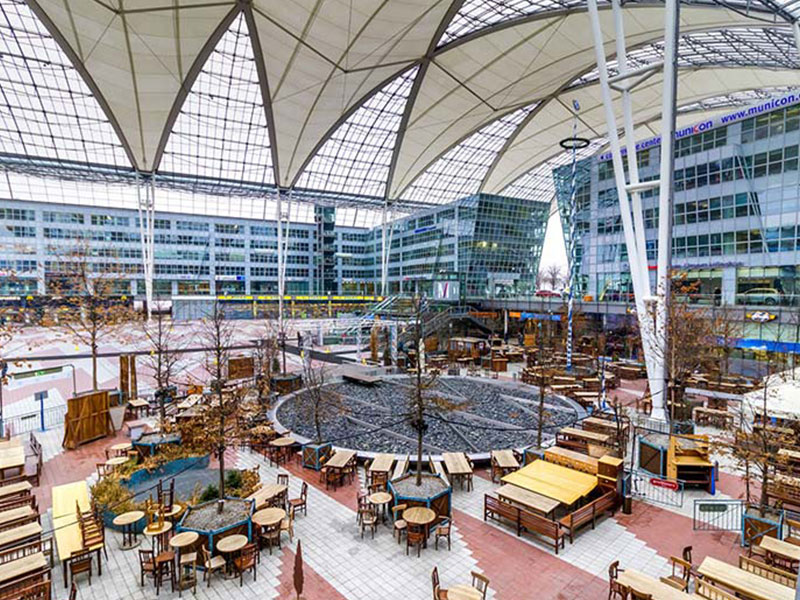
The initial plans for the expansion of Munich Airport date back to 1954, when the need for greater capacity and the spatial limitations of the old Munich-Riem Airport provided the impetus for constructing a new airport. This new airport was considered not only as a replacement for the older one but was also built with the aim of meeting the expanding needs of air transport and providing more space for future development.
Therefore, the construction of the new airport began on November 3, 1980, and it was put into operation on May 17, 1992. The development and expansion of the airport have continued with the addition of terminals and new facilities. Additionally, This Airport has received numerous international awards for its excellent service to passengers.
Location: Munich Airport
The criteria for identifying the best airports in the world are not limited to statistics and numbers; this selection is based on experiences, exceptional services, easy access, and stunning architecture. Airports like Changi Singapore, Munich Germany, and Hamad International Airport in Doha, Qatar, with their exceptional services including extensive shopping centers, lush gardens, spas, and even cinemas, have invited passengers to an experience that goes beyond a mere air journey to a memorable one.
These airports not only serve as gateways to the final destination but have also turned the airport environment into an exciting place where passengers can enjoy the space, rest comfortably, and even make discoveries during their stay. Hence, criteria such as efficiency, innovation in travel services, and environmental sustainability have gained increasing importance in evaluations.
With the expansion of technology and the growing focus on passenger experience, the world’s leading airports are becoming spaces where technology and passenger comfort are best combined. These airports represent a future in which air travel goes beyond previous expectations and moves towards unforgettable experiences.